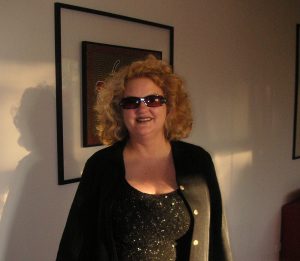Quick and snappy
Okay: so you’ve already written a picture book without reading the pages and pages of advice on my website. Tut, tut! I made many bungles in my attempts to be published and I’d hate you to waste time by making the same silly mistakes. May I kindly and warmly suggest that you read all the advice I’ve posted below, after this ‘quick-and-snappy’ section.
In order to write, first you have to have lived. Only in the most rare circumstances will young writers be published. So if you’re still at school, or even under 23, think hard about doing something else for a while until you’ve experienced many more books, people, events, situations and emotions than you will have at, say, 18.
Write from the compost of your own life, feelings, experiences, hopes, joys, disappointments, and so on. If you do that, the reader will be able to connect with your story because it will be based on the authenticity of universal understandings. In particular, you need to read and read and read and read to learn as many different ways of using. In particular, you need to read and read to read in order to build inside your head a massive bank of lusciously different words and phrases that you can choose from at any time. I advise learning by hear something from Dr Seuss, Shakespeare, the King James version of the Bible, A.A. Milne or anything else in which the rhythm of the language is perfect. Rhythm needs to be in the marrow of your bones if you’re thinking of writing a picture book. And I don’t mean rhymes, necessarily. I mean the perfect placement of syllables anywhere: in a prose sentence, or in verse.
This is my beloved, bossy US editor, Allyn Johnston. Editors know best. Don’t argue with editors too much. They do know what’s best. On the other hand, don’t give in to their every suggestion, every time. You are a writer, after all.

This is my adored, very bossy literary agent, Jenny Darling at Jenny Darling and Associates. Agents are worth their weight in gold. They will fight for you all the way, so find one if you can.
This was my wonderful, extremely bossy, Penguin publicist, Anyez Lindop, until she moved onwards and upwards. The publicist is the bossiest person of all . Her every word must be obeyed. Publicists accompany writers on book tours. In the current publishing climate, most books, even excellent books, aren’t afforded the precious exposure of a book tour. You have to get out there yourself and and ‘sell’ the book (not literally) in any way you can. Social media is a must.
It is foolhardy to write a story in rhyme. My USA editor , Allyn Johnston, rejects almost every story (i.e. a text with a beginning, middle and end) written in rhyme because most would-be writers aren’t able to achieve the correct scansion: they don’t understand what constitutes the right number of beats in a sentence. Rhyme is fine in a book like Where is the Green Sheep? since it is not a ‘story’, so the words don’t need to accommodate a plot-line. The words and syllable count still have to be perfect, of course, in any sentence, in any text, rhyming or not.
Remember that a picture book is 32 pages. In printing, the pages are folded in half, then in 4, then in 8, then in 16, then in 32 which is why the 32-page format still exists. Half of those pages are pictures, so try to keep the word-count under 500 and don’t explain anything that will be made obvious in the artwork. When you’re drafting a picture book it’s useful to make your own 32-page mock-book, called ‘a dummy’, by copying all the features of a real picture book like endpapers, the title page, dedication and publishing information page and so on. It also helps to put the text on each page to see how the page-turns pan out. The page-turns are crucial to success.
I write with soft 4B pencils because they float across the page and rub out easily. Writing on paper makes it easier to see the text/story as a whole, easier to edit, easier to put arrows to where a piece of text might be better placed, and so on. Writing on paper also means you always a have copy of what you have written, even if you have lots of crossings out. If you write on a computer or tablet make sure you print every single draft. Some of what you delete at one point may later be remembered to have been brilliant and perfect, and you’ll kick yourself if you happen to have lost it.
While you’re writing, your best friends will be the ‘cut’ and ‘delete’ keys on your computer, or an eraser. At any one time you can probably cut much of what you have written, crushing though that might seem. The biggest fault of wannabe picture-book writers is to write too much. Over 500 words means alarm bells should be ringing: cut as much as you can, usually at the beginning. Put your hand over the first paragraph and see if you can start on the second paragraph. If you can, try getting rid of that one also, and start on the third paragraph. Oh, yes, cutting is painful but necessary. I admit that Possum Magic is 512 words and Wilfrid Gordon McDonald Partridge is 629 words but they are exceptions to the general rule.
Write in total silence. Remember: you’re creating music. You have to hear the lilt of the words in your head first, and then hear them aloud. Read your drafts aloud, over and over again. If there’s a fly buzzing in the room, kill it.
Unless you’re an art-school trained illustrator don’t even think about doing the pictures yourself.
Also, it’s pointless finding your own artist. Don’t do it. The publisher will choose the illustrator. And you will have little or nothing to do with that person: just let them get on with the job since they have the talent, not you. Sad, but true. If you send original art with your story the publisher will probably reject the pictures that have been executed so painstakingly by a talented friend, but they may love your story. And then who rewards the artist financially for the time he or she has wasted doing your book? It’s just not fair on the artist.
Of course if you’re already a trained illustrator and you are also the author, then send everything you have done.
The only cost to a writer, of getting a book published is, and should be, merely the initial cost of mailing the manuscript to a publisher; or at no cost, emailing it. All the other costs are borne by the publisher. The writer is never out of pocket. It should cost you nothing.
Don’t, under any circumstances, contemplate self-publishing, unless it’s only a few copies for your immediate family. You’ll end up with a terrifying debt and a shed full of un-sold books. Self-publishing provides no market-research, no distribution, no publicity, no marketing, no warehousing, no advertising, and very few buyers since bookshops rarely buy books that established publishers haven’t endorsed. I know of sad souls who have lost their houses as a result of self-publishing. It’s heartbreaking.
What does a picture book writer earn? Half the royalties. The other half goes to the illustrator. Typical royalties on a picture book are 10% of the recommended retail price, so if a book costs $20 the writer will receive 5%: a dollar for each book sold. Royalties can rise to 12.5 % if a book sells well. Writers are paid twice a year, six months apart, such as in September and March. On top of that, you will pay 15% to your literary agent, and also, in Australia at least, there is the payment of taxes! So in the end it’s never even a dollar a book, it’s much less. (Don’t complain about paying tax. How else can we live in a civil society?) All of this information adds up the fact that most writers don’t end up as millionaires.
It is crazy not to have an agent to guide you through the intricate bastardry of publishing contracts, but remember, as I’ve just pointed out, that an agent will take 10-15% of your earnings in commission. It may seem a lot, and even unfair to the uninitiated, but agents save you, and gain for you much more than you pay them. Find an agent near you through Google.
If you can’t find an agent you might call a publisher first before wasting your time, to ask whether they accept manuscripts directly.
In whatever country you live, read as many books as possible of the same kind as you have written yourself. Look at who published them. Research those publishers on the net. Try to find the names of their children’s editors and spell their names correctly. Send your manuscript by mail or email—it shouldn’t be more than three pages of typing in 12 font, double spaced—to one editor at a time, or to an agent if you can find one who will take you on. Don’t be cute in your covering letter. Just say that you have enclosed a story for consideration, with the date, your name and your address. You may have to wait up to three months for a reply. If you want the manuscript back, be sure to say so, and enclose a stamped addressed envelope.
Don’t be too discouraged by rejections. Many a famous author has been turned down over and over again before becoming an ‘overnight’ success. But do remember the dreadful statistic that 97% of the books written by eager writers are never published. Perhaps that’s because they didn’t read my hints first. Hmmmm.
So, get to it. Best of luck. And here’s to your own book signing!





